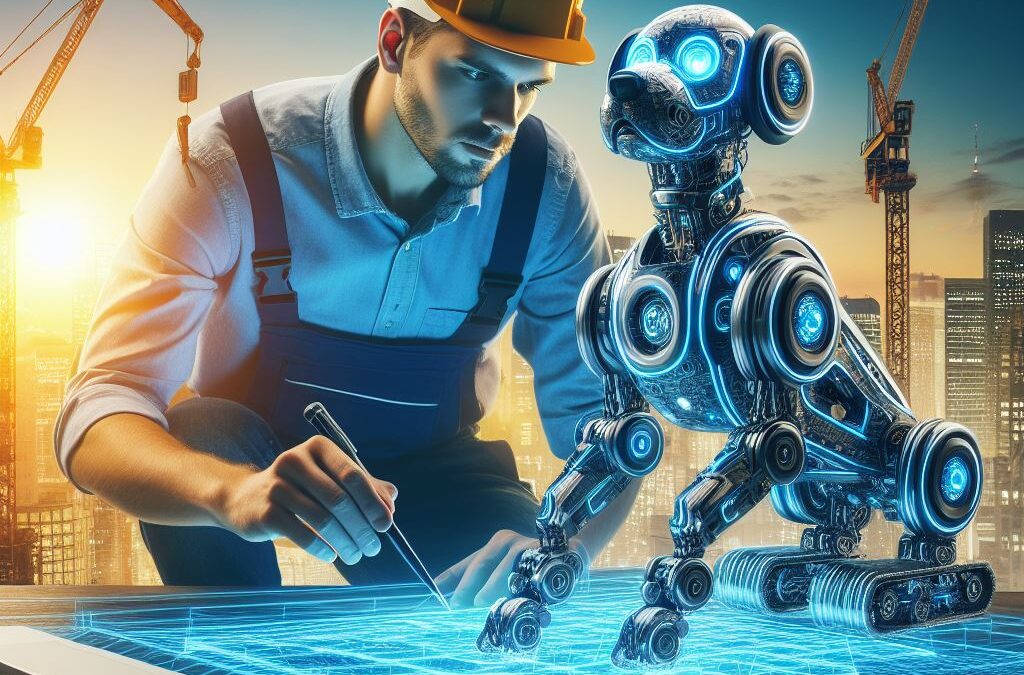Man’s Best Friend Goes Digital: How Spot the Robotic Dog Revolutionizes Construction
Construction sites have long been synonymous with heavy machinery, hard hats, and human grit. But a new, unexpected player is entering the mix, wagging its robotic tail and redefining efficiency: Spot, the Boston Dynamics quadruped robot, is proving its worth as a valuable construction site assistant.
From Entertainment to Excavation:
Originally unveiled as an agile robot capable of navigating complex terrain, Spot has transitioned from the entertainment world to the more practical sphere of construction. Its unique design, resembling a dog with four sturdy legs and a mobile torso, grants it the ability to traverse uneven surfaces, climb stairs, and maneuver around obstacles – skills perfectly suited for navigating the often challenging landscapes of construction projects.
Beyond Brute Force: Surveying and Documentation Made Easy:
Forget bulky equipment and manual labor. Spot excels in tasks requiring precision and agility. Equipped with various sensors, including lidar, cameras, and GPS, it can autonomously conduct site surveys, collecting accurate data on terrain, dimensions, and potential hazards. This translates to faster and more efficient mapping, saving time and resources.
Imagine this: Instead of surveyors trudging through mud and rubble, Spot navigates the terrain with ease, capturing data as it goes. Back in the office, engineers analyze the data in real-time, making informed decisions on construction plans and identifying potential issues before they arise.
Documentation On-the-Go:
But Spot’s talents extend beyond mapping. Mounted with high-resolution cameras, it acts as a tireless documentation assistant. Imagine the robot patrolling the site, automatically capturing images and videos of progress, inspections, and safety protocols. This real-time documentation streamlines communication, improves transparency, and provides valuable data for future reference.
Safety First:
Construction zones are inherently dangerous, and Spot can add an extra layer of safety. Imagine the robot autonomously patrolling the site, equipped with sensors that detect hazardous gasses, unstable ground, or even unauthorized entry. This can alert workers to potential dangers, preventing accidents and improving overall safety on the job site.
Building the Future: Collaboration is Key:
Spot isn’t meant to replace human workers; it’s there to augment their capabilities. Imagine construction crews working alongside Spot, utilizing its data and insights to work smarter, not harder. With real-time data on their tablets, workers can optimize tasks, identify potential errors early on, and make informed decisions based on accurate information.
Challenges and Adaptations:
Despite its potential, challenges remain. Cost, battery life, and integration with existing workflows are hurdles that need to be addressed. Additionally, regulatory frameworks around autonomous robots on construction sites need to be established.
However, the rapid advancements in robotics and AI suggest these challenges are temporary. Companies like Boston Dynamics are constantly improving Spot’s capabilities, with longer battery life, enhanced sensors, and improved weatherproofing on the horizon.
The Road Ahead: A Digital Workforce in Construction:
Spot is just the tip of the iceberg. From autonomous excavators to collaborative robots assisting with bricklaying, the future of construction looks increasingly robotic. These advancements hold the potential to improve efficiency, safety, and sustainability in the industry.
The construction industry faces challenges like labor shortages and increasing complexity. By embracing robotic solutions like Spot, companies can not only overcome these challenges but also build a more innovative and efficient future for the industry. The future of construction might not involve just hard hats and heavy machinery, but also robotic companions like Spot, wagging their digital tails towards a brighter, more efficient future.

